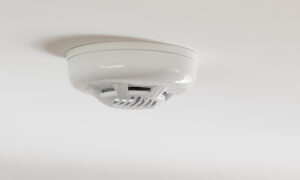Unnoticeable and odorless, carbon monoxide (CO) is a deadly gas that threatens homes and individuals. Understanding the risks associated with its poisoning and taking applicable measures to help against exposure is important for the protection and well-being of your household. This blog aimed to exfoliate light on the significance of carbon monoxide detectors in guarding your home and loved ones.
From explaining its nature to exploring how detectors serve and the types available, we will equip you with the knowledge demanded to guard your home. We’ll also examine the crucial differences between carbon monoxide and smoke alarms and give essential tips for precluding CO buildup. So, let’s dive into it!
Importance Of Carbon Monoxide Detectors
These are essential devices that cover the air for CO gas. Their primary function is to notice elevated situations of poisonous gas and sound an alarm to alert occupants of the implicit danger. The significance of these detectors can not be overstated, as they give early warning signs of this hazardous gas buildup, allowing occupants to take immediate action to cover themselves.
How CO Detectors Work
These use various technologies to detect the presence of the gas. One standard system involves electrochemical detectors that induce an electrical current when exposed to poisonous gas. This current triggers the alarm to alert occupants. Other types of detectors used in these sensors include biomimetic and metal oxide semiconductor sensors.
Types Of Carbon Monoxide Detectors
-
Battery-Operated Sensors
These are movable and can be placed anywhere in your home. They’re powered by interchangeable batteries, furnishing inflexibility in installation and mobility.
-
Hardwired Sensors
These sensors generally have a battery backup to ensure continued functionality during power outages. Ingrained sensors are recommended for their trustability and constant power force.
Difference Between Carbon Monoxide And Smoke Alarms
Understanding the distinction between CO and smoke alarms is crucial, as each serves a specific safety purpose. While smoke alarms are designed to detect the presence of smoke from fires, carbon monoxide alarms specifically cover the air for the actuality of this harmful gas. It’s essential to have both sensors installed in your home to give comprehensive protection against different hazards.
Preventing Carbon Monoxide Buildup In Your Home
1. Schedule Regular Maintenance For Energy- Burning Appliances
Energy-burning appliances like furnaces, water heaters, and stoves require regular maintenance to ensure their safe and effective operation. Schedule professional inspections and servicing at least formerly a time. A good technician will check for potential issues, clean the factors, and ensure proper combustion and ventilation. Regular conservation significantly reduces the threat of CO leaks and ensures the appliances serve optimally.
2. Ensure Proper Ventilation And Airflow
Acceptable ventilation is pivotal in areas where energy-burning appliances are present. Ensure that reflections, chimneys, and flues are clear of obstructions similar to debris, bird nests, or snow buildup. Blocked ventilation can lead to the buildup of CO indoors. Maintaining proper airflow is essential to allow the safe disbandment of combustion gases. Consider installing these detectors near energy-burning appliances to give fresh protection.
3. Install Carbon Monoxide Detectors
These are essential for early detection and warning of elevated levels of CO in your home. Install Carbon Monoxide Detectors in crucial locations throughout your home, particularly near sleeping areas and energy-burning appliances. Follow the manufacturer’s guidelines for optimal placement, which generally recommend installing sensors at the knee position or on the ceiling. Test the sensors regularly to ensure they serve correctly, and replace batteries as demanded.
4. Avoid Inner Use Of Energy- Burning Devices
Using energy-burning devices similar to grills, creators, or indoor boarding stoves can be extremely dangerous. These devices produce this harmful gas as a derivate of combustion, and using them outdoors can lead to a rapid-fire gas buildup. Always use outdoor-rated outfits in well-voiced areas. However, ensure proper ventilation by opening windows or using exhaust fans to remove the gases produced, If using energy-burning tools indoors.
5. Be Cautious With Fireplaces And Wood- Burning Stoves
Fireplaces and wood-burning stoves add warmth and air to our homes, but they can also be a source of poisonous gas if not used duly. Having your chimney audited and gutted regularly is pivotal to help blockages that can hamper proper airflow and prevent this harmful gas from entering your home. Also, use only seasoned wood to minimize the production of dangerous gases and ensure that the mute is open to allow for effective combustion.
6. Never Ignore CO Alarms
These are designed to notice and warn you about the presence of this poisonous gas in your home. Take immediate action if your alarm goes off or you hear a distinctive beeping sound indicating an implicit harmful gas leak. Void the demesne and call exigency services from a safe position. Don’t re-enter the structure until authorities have supposed it safe. This gas is a silent killer, and ignoring the alarm can have severe consequences.
7. Educate Household Members
It is crucial to inform all family members—including kids—about its security. Teach children to detect the warning signs and symptoms of its poisoning, such as headaches, nausea, dizziness, or confusion. Establish and exercise exigency evacuation plans, and make sure everyone knows how to exit the house safely and where to meet outdoors. Educate proper ventilation practices and emphasize the significance of noway blocking vents or obstructing airways.
Bottom Line
Guarding your home and loved ones from its poisoning requires alert and visionary measures. These sensors serve as your first line of defense, furnishing early warning signs and giving you precious time to reply. You can produce a safe and secure living environment by understanding the nature of toxic gas, how sensors serve, and the preventive measures you can take. Make Carbon monoxide Detector a safety a priority and empower yourself with the knowledge and tools to cover your household.








